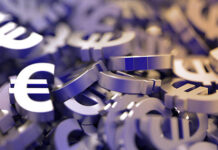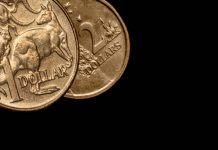Markets
And another sell-off in core bonds yesterday. US Treasuries underperformed, especially at the long end. Yields shot up between 0.3 (2-y) and 11.6 (30-y) bps. It’s an extension of what has been happening all week, with the US Treasury ramping up supply and a strong ADP job report on Wednesday serving as the latest catalyst. The 30-y at some point was less than 10 bps away from its October 2022 cycle high. The US services ISM fell slightly below expectations (52.7 vs 53.1, down from 53.9) but new orders (55.0) were solid. And more importantly: prices paid rose from 54.1 to 56.8. It’s the biggest one-month jump since August 2021 and the first increase since October last year, barring the negligible rise in April this year. German yields rose 2.1-7.0 bps in a further dis-inversion of the curve. Rising oil prices also helped yield higher. The Saudi’s (1m barrels) and Russia (300k) decided to extend the voluntary production cut into September with the former hinting at deeper production curbs. Brent recovered from an intraday low at $82.36 to close above $85. Higher energy/commodity prices could spell trouble for central bank’s inflation battle. For all the bond violence, moves on other markets were muted. European stocks underperformed (SX5E -0.7%, Wall Street no more than -0.25%). The dollar was unable to profit with EUR/USD leaving eventually leaving the lows behind to close at 1.0949. The trade-weighted DXY took a breather around 102.54 after the recent surge. Sterling initially extended losses post-BoE amid a 10 bps UK yield collapse (2-y). But as rates recovered in line with global market moves, EUR/GBP eventually finished only marginally higher, north of 0.86.
China this morning announced several measures to rejuvenate its capital markets. It is part of a series of other decisions it took earlier this week in the broader context of kickstarting the ailing economy. The country also said additional support is coming up. Chinese stocks were thrilled at first but have been paring gains as the session evolved. They currently add up to 1.4%, still outperforming regional peers though. The yuan gapped higher but couldn’t maintain gains. USD/CNY moved from 7.15 to 7.18. The dollar generally eases against most of the G10 counterparts, extending yesterday’s pause. The core bond massacre also slow with US yields stabilizing around yesterday’s closing levels. Today’s US payrolls are the next big thing for markets. Consensus expects a solid 200k job growth. There are risks on both sides. ADP’s job report on Wednesday calls for an upside surprise but yesterday’s employment component (50.7 from 53.1) in the US services ISM offers some counterbalance. After the recent dramatic US yield surge markets may be more sensitive to a (slight) miss than a beat. The weekend and next week’s July CPI reading looming could also be a good enough reason for markets to hold a more cautious bias today. Support for the 10-y yield kicks in at 4.08/4.09%. The dollar in the same vein will probably find it difficult to build on recent strong gains. EUR/USD 1.1033/47 is the first reference to the topside.
News and views
The Czech koruna lost significant ground after yesterday’s CNB meeting. EUR/CZK seared from below 24 to a close of 24.24, the highest (CZK weakest) level since the start of the year. The sharp move came as the central bank at its meeting officially shelved its FX intervention tool since it hasn’t been using it Since October last year. With it, the CNB removed a backstop that put a solid floor below the CZK. It is perhaps also viewed by markets as a first (baby) step towards the monetary easing cycle. The new CNB forecasts project inflation to ease significantly in 2024 (2.1%) and 2025 (1.7%). But in setting the rate, the board uses alternative scenarios with upside inflation risks. To that end, the CNB continues to push back against premature rate cutting bets by markets and as suggested by its own model from September on. Instead it favours the policy rate to remain at the current level for a bit longer. The debate on rate cuts may not start before the fall, governor Michl (and others recently) said. KBC Economics expect a first 50 bps cut in Q4 this year without excluding a postponement until early 2024.












